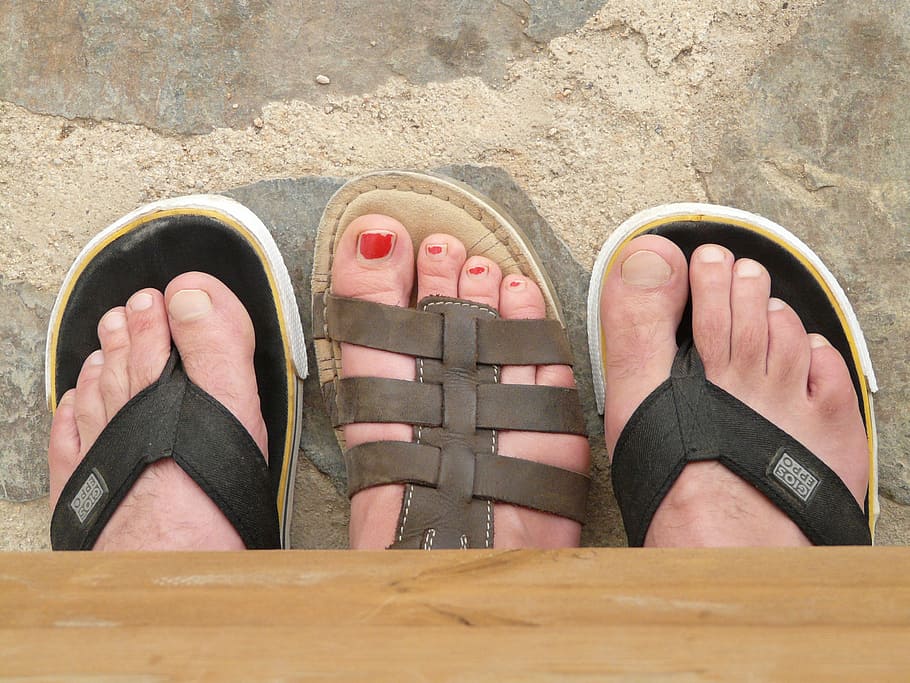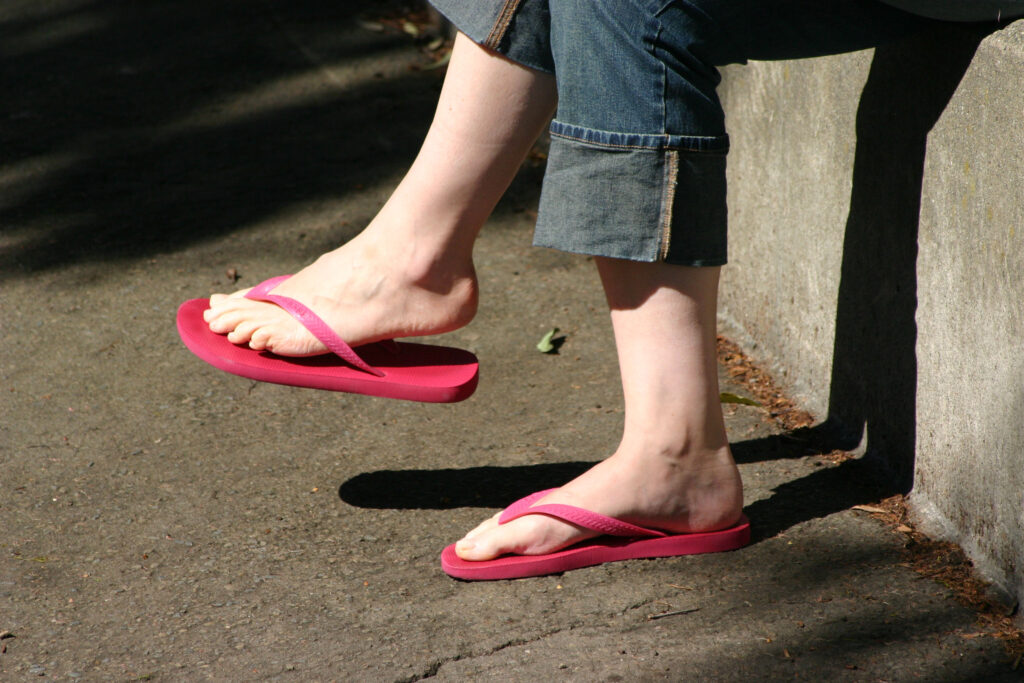Can Flip-Flops Cause Foot Pain?

Are flip-flops bad for your feet? You may have heard such a rumor but then “brushed it under the rug,” so to speak, because … who doesn’t love a good pair of flip-flops? They’re great for camping, a day at the beach, or just running out the door to check the mail.
Still, there’s something to be said for those nasty rumors that flip-flops can end up causing pain. In fact, flip-flop foot pain is something we see a lot of at our practice.
In this article, we’ll attempt to outline exactly why flip-flops aren’t great for your feet and when to see a podiatrist for long-term issues.
Why Flip-Flops Hurt Your Feet
While cute, easy to slip on, and relatively inexpensive, flip-flops do pose a number of problems physically.
First, flip-flops don’t offer any arch support, which is critical for safe and comfortable footwear. Instead, they are simply thin, flat pieces of rubber, which then encourage your feet to be flat as well. Many people struggle with heel soreness and arch pain as a result of wearing flip-flops for prolonged periods.
In addition, your foot is not cushioned when wearing flip-flops because they’re so thin and open. Their thickness doesn’t provide the necessary shock absorption, which can cause issues such as tendinitis and even sprained ankles. On a smaller, more temporary scale, wearers of flip-flops risk being injured from stepping on rocks or sharp objects or from stubbing their toes or exposing their feet to heavy falling objects. Most people don’t think of their shoes as actual protection for their feet, but there’s a reason construction workers wear steel-toed boots.

Long-term, flip-flops can cause the following physical issues:
Joint Pain
When the shoes you wear are not fully encased around the foot as, say, tennis shoes are, pain and discomfort in the joints can arise. This is because shoes like flip-flops change how you walk. You may not notice this, but you need to grip your toes in order to keep these shoes on your feet. It’s also common to drag your feet a bit in flip-flops. These changes may seem minor and insignificant, but they often cause long-term pain in the ankle, knee, and hip joints.
Toe Pain, Tendonitis, and Bunions
As the toes need to work extra hard to keep flip-flops on, this often causes toe pain after continuous flip-flop wearing. Two specific issues often arise: tendonitis and “hammertoes“. The latter issue leaves toes bent abnormally, and if not treated, can cause bunions as well.
Posture Problems
Your entire body’s biomechanics are changed when you wear flip-flops. That’s because the flat inflexibility of this shoe type limits your foot’s ability to bend in a natural way.
Heel Pain and Plant Fasciitis
The plantar fascia is a band of tissue that covers the bottoms of your feet. When you wear flip-flops, the continued lack of support can cause this tissue to become inflamed, which can then lead to severe heel pain and plantar fasciitis. This, in turn, can cause increased flatness of the foot and long-term problems.
When to See a Podiatrist
If any of the above issues have not been resolved after you’ve stopped wearing flip-flops, it may be time to contact your podiatrist. We’ll be able to assess your feet, joints, posture, and footwear and give you some options that can reduce or, ideally, eliminate your discomfort. Red Mountain Footcare is the premier foot doctor in the East Valley. Our team is comprised of sympathetic, experienced, and skilled professionals to offer you the comprehensive footcare you deserve.
You Might Also Enjoy: How To Treat Toenail Fungus At Home
